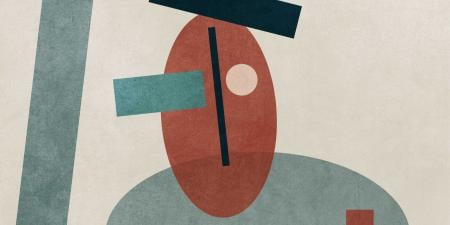Abstract
Students with disabilities add rich diversity to medical education and help motivate health equity. Unjust obstacles faced by many of these students along pathways to medicine begin during medical school admissions. Deeply embedded ableist notions of what it means to be a physician keep archaic practices in place that serve as systemic barriers to the admission of members of this population. This article summarizes the prominent obstacles for applicants with disabilities and suggests ways in which thoughtful, inclusive admission policies and practices can ultimately contribute to a clinical workforce that is more appropriately diverse and prepared to provide just and patient-centered health care.
Diversity and Disclosure
Physicians of the 21st century need the skills and knowledge that are fostered in diverse learning and work environments.1 Research shows that diversity contributes to creativity and development of problem-solving skills, with more diverse groups outperforming more homogeneous ones,2,3,4 a fact that should influence how we select members of medical school classes. In 2016, 25.7% of the US adult population included persons with a disability.5 Medical students with disabilities, training among diverse faculty and colleagues, would positively contribute to the preparedness of physicians and their colleagues to meet the unique needs of patients with disabilities, facilitate shared decision making, and contribute to innovation—and do so with greater empathy.6,7,8,9,10,11,12,13,14 Despite ongoing inclusion efforts,15 the numbers of medical students16,17,18 and physicians with disabilities remain small,19 and unjust obstacles persist for persons with disabilities looking to matriculate in medical school.20,21,22,23,24,25,26,27,28
This article summarizes prominent obstacles for medical school applicants with disabilities and suggests ways in which thoughtful, inclusive admission policies and practices can ultimately contribute to a clinical workforce that is more appropriately diverse and prepared to provide just and patient-centered health care.
Underrepresented in Medicine
US legal protections for persons with disabilities preclude monitoring progress in inclusive admissions, given the bar on preadmission inquiry into applicants’ disability status.29 A downside to these protections is that monitoring how many medical school applicants with disabilities become matriculants with disabilities is not easy. We can, however, seek to understand the admissions experiences of persons with disabilities through retrospective analyses of school-centered30 and trainee-physician15 research and via commentaries.8,9,10,11,12,13,14,31 While we cannot monitor the number of candidates with disabilities who are accepted to medical school, we can monitor the retention of students with disabilities who matriculate.
Among those who do matriculate, not all will feel safe disclosing their disabilities. An anonymous Association of American Medical Colleges (AAMC) survey of graduating students revealed that 7.6% identified as having a disability,32 yet data collected directly from medical schools show that only 4.6% of students in MD (doctor of medicine) programs and 4.3% of students in DO (doctor of osteopathic medicine) programs disclose their disability to the school and request reasonable accommodations.16,18
The pathway from education to practice is murky, given the dearth of information. One recent study of emergency medicine resident physicians found that 4.1% disclosed a disability and requested accommodation.33 The number attenuates along the pathway from education to practice, with recent data showing that only 3.1% of physicians self-identify as having a disability.19 These data suggest that educational and professional development pathways are fraught with barriers,19,33,34 despite legal protections and reasonable accommodations required under the Americans with Disabilities Act (ADA).35 One might ask: If including individuals with disabilities carries such promising benefits, why are so few individuals with disabilities in medicine? Identifying barriers to their admission to medical school is key.
Ableism Undermines Access
Long before people with disabilities apply to medical school, it’s likely that many of them experienced formal education accompanied by informal lessons on how to navigate disability-related obstacles, such as lack of access to technical and advocacy (including self-advocacy) resources; lack of opportunities to take science, technology, engineering, and mathematics courses; scarcity of role models with disabilities succeeding in hierarchies of science professions19,31,33,34; and historically entrenched systemic ableism reinforced by social, cultural, and interpersonal messaging—implicit or explicit, intentional or unintentional—that disability means inability.23,24,25,26,27,28,36,37 Disabled learners commonly experience ableist bias as stigmatizing and oppressive in their early childhood, adolescent, college, and graduate and professional education encounters; inequitable access to shadowing opportunities38; and high-stakes testing that is burdensome and time-consuming for them, as it requires far more documentation than is required under the law.36,39
If including individuals with disabilities carries such promising benefits, why are so few individuals with disabilities in medicine?
For those who persevere through the application process, new barriers may preclude them from entering medicine, such as the need to disclose disability status and sensitive details about their disability in exchange for access23,36 or technical standards that block their matriculation40,41,42,43,44,45,46,47,48 even if they are highly qualified. In addition to these barriers, many students lack mentors with expertise in effectively advocating for disability-related needs, especially in hierarchical settings with immense power differentials.
Technical Standards
Prior to matriculation, many medical schools require students to attest to their ability to meet the school’s technical standards, some of which explicitly forbid use of accommodations, such as intermediaries and interpreters.41 Although technical standards may only be used to disqualify an applicant if they are nondiscriminatory and if no reasonable accommodation would allow an applicant to meet them,42 technical standards have thwarted matriculation (and even the initial decision to apply) of many qualified applicants to many medical schools.40,41,42,43,44,45,46,47,48
Abundant research and commentaries have problematized technical standards as outdated, discriminatory,40,41,42,43,44,45,46,47,48 and unnecessarily geared to patient safety49 in yet another expression of systemic ableism. Some analyses illuminate how medical schools’ technical standards undermine equity44,45 or propose alternatives.40,41 Others offer guidance, exemplars, and resources on how to make inclusive, nondiscriminatory technical standards.46,47,48 For example, one article advises a medical school’s technical standards to (1) make a statement about the school’s valuing disability as an expression of diversity, (2) communicate the school’s process for facilitating students’ disability disclosures and requests for reasonable accommodations, (3) avoid language that might prompt persons with disabilities to self-select out of the school’s class, and (4) be posted online.46 It is also important that consideration of disabilities includes psychological, learning, or chronic health disabilities, as these are represented in a majority of documented disabilities in medical school.18
Rising to a Legal Minimum is Not Inclusion
Medical schools that are only willing to do the legal bare minimum8,50 to reasonably accommodate students with disabilities fail to embrace the spirit of the law, the goals of inclusion, and disability itself as an important element of diversity. A compliance-based approach to disability inclusion is ethically insufficient to promote students’ comfort with disclosure and nourish the kind of productive engagement students with disabilities deserve in response to their requests for reasonable accommodations.51 Medical schools fully expressing a good faith commitment to disability as diversity—over and above the bare minimum—are actively creating student services infrastructure and the faculty education and training needed to support students’ disability disclosures and accommodation requests.15 Schools’ policies and practices should also be reviewed and amended when needed to align with best practices. Medical schools looking to promote holistic review of applicants can help innovate medical education by hosting workshops on holistic admissions; in fact, those that have done so have demonstrated sustained growth in diversity among their students.52
Evaluating applicants with disabilities. Medical schools’ admissions policies and practices must be procedurally just before they can effectively promote equity and inclusion. Anti-ableist training is a must for all admissions committee members, just as holistic review31 of applicants is a must for reframing disability as value added to medical schools looking for students with resilience and grit.53 Outreach efforts to identify, recruit, and retain students from diverse backgrounds should seek out students who have cultivated these character traits by navigating life with a disability in an ableist world.51
Accommodations’ reasonableness. Whether an accommodation would fundamentally alter a program or pose undue administrative or financial burdens on a school are not admissions decisions51 and should be adjudicated by an informed disability resources professional in partnership with the program.15,54 Moreover, accommodation decisions are ancillary to the academic and personal characteristics evaluated by admissions committees; evaluation of the reasonableness of a person’s request for accommodations, therefore, should occur between an offer of admission and the student’s matriculation.46 Indeed, disability equity and inclusion require schools to make clear distinctions between their admissions and student services operations.
Practicing Equity
Inclusion of individuals with disabilities in medicine is a highly influential way to promote equity.6,7,8,9,10,11,12,55 Increasing representation among students, trainees, and physicians with disabilities so as to be more reflective of the people they serve can also mitigate harmful effects of clinician bias on colleagues, patients, and their loved ones during clinical encounters.56,57,58,59,60,61 There is value in the disabled person’s dual lived experience as a patient and as a professional that can motivate clinicians and colleagues to be more informed practitioners, the medical profession to be more just, and society to resolve health care disparities.
References
- Kirch DG. Transforming admissions: the gateway to medicine. JAMA. 2012;308(21):2250-2251.
-
Page SE. The Difference: How the Power of Diversity Creates Better Groups, Firms, Schools, and Societies. Princeton University Press; 2007.
- Guiton G, Chang MJ, Wilkerson L. Student body diversity: relationship to medical students’ experiences and attitudes. Acad Med. 2007;82(10)(suppl):S85-S88.
- Morrison E, Grbic D. Dimensions of diversity and perception of having learned from individuals from different backgrounds: the particular importance of racial diversity. Acad Med. 2015;90(7):937-945.
- Okoro CA, Hollis ND, Cyrus AC, Griffin-Blake S. Prevalence of disabilities and health care access by disability status and type among adults—United States, 2016. MMWR Morb Mortal Wkly Rep. 2018;67(32):882-887.
- Iezzoni LI. Why increasing numbers of physicians with disability could improve care for patients with disability. AMA J Ethics. 2016;18(10):1041-1049.
- Meeks LM, Poullos P, Swenor BK. Creative approaches to the inclusion of medical students with disabilities. AEM Educ Train. 2020;4(3):292-297.
- Schwarz CM, Zetkulic M. You belong in the room: addressing the underrepresentation of physicians with physical disabilities. Acad Med. 2019;94(1):17-19.
-
Mogensen L, Hu W. “A doctor who really knows…”: a survey of community perspectives on medical students and practitioners with disability. BMC Med Educ. 2019;19:288.
- Meeks LM, Herzer K, Jain NR. Removing barriers and facilitating access: increasing the number of physicians with disabilities. Acad Med. 2018;93(4):540-543.
- DeLisa JA, Lindenthal JJ. Learning from physicians with disabilities and their patients. AMA J Ethics. 2016;18(10):1003-1009.
-
Khullar D. Doctors with disabilities: why they’re important. New York Times. July 11, 2017. Accessed October 21, 2021. https://www.nytimes.com/2017/07/11/upshot/doctors-with-disabilities-why-theyre-important.html
- Archambault Carlson M. You did not teach me what you thought you did. JAMA. 2020;323(17):1732-1733.
-
Blacker CJ. What’s wrong with you? JAMA Neurol. 2021;78(3):269-270.
-
Meeks LM, Jain NR. Accessibility, Inclusion, and Action in Medical Education: Lived Experiences of Learners and Physicians With Disabilities. Association of American Medical Colleges; 2018. https://store.aamc.org/downloadable/download/sample/sample_id/249/
-
Meeks LM, Case B, Plegue M, Moreland CJ, Jain S, Taylor N. National prevalence of disability and clinical accommodations in medical education. J Med Educ Curric Dev. 2020;7:2382120520965249.
-
Meeks LM, Plegue M, Case B, Swenor BK, Sen S. Assessment of disclosure of psychological disability among US medical students. JAMA Netw Open. 2020;3(7):e2011165.
- Meeks LM, Case B, Herzer K, Plegue M, Swenor BK. Change in prevalence of disabilities and accommodation practices among US medical schools, 2016 vs 2019. JAMA. 2019;322(20):2022-2024.
-
Nouri Z, Dill MJ, Conrad SS, Moreland CJ, Meeks LM. Estimated prevalence of US physicians with disabilities. JAMA Netw Open. 2021;4(3):e211254.
- Panzer KV, Maraki I, Cross T, Meeks LM. Podcast possibilities: asynchronous mentoring for learners with disabilities. Med Educ. 2020;54(5):448-449.
- Moreland CJ, Latimore D, Sen A, Arato N, Zazove P. Deafness among physicians and trainees: a national survey. Acad Med. 2013;88(2):224-232.
- Jain NR. Political disclosure: resisting ableism in medical education. Disabil Soc. 2020;35(3):389-412.
- Rastogi S. Establishing equity in medical education—supporting clinical trainees with disabilities. N Engl J Med. 2021;384(10):885-887.
- Haque OS, Stein MA, Marvit A. Physician, heal thy double stigma—doctors with mental illness and structural barriers to disclosure. N Engl J Med. 2021;384(10):888-891.
- Easterbrook A, Bulk L, Ghanouni P, et al. The legitimization process of students with disabilities in health and human service educational programs in Canada. Disabil Soc. 2015;30(10):1505-1520.
- Bulk LY, Easterbrook A, Roberts E, et al. “We are not anything alike”: marginalization of health professionals with disabilities. Disabil Soc. 2017;32(5):615-634.
- Easterbrook A, Bulk LY, Jarus T, et al. University gatekeepers’ use of the rhetoric of citizenship to relegate the status of students with disabilities in Canada. Disabil Soc. 2019;34(1):1-23.
- Stergiopoulos E, Fernando O, Martimianakis MA. “Being on both sides”: Canadian medical students’ experiences with disability, the hidden curriculum, and professional identity construction. Acad Med. 2018;93(10):1550-1559.
-
Admissions and Recruitment, 34 CFR §104.42 (2021).
- Eickmeyer SM, Do KD, Kirschner KL, Curry RH. North American medical schools’ experience with and approaches to the needs of students with physical and sensory disabilities. Acad Med. 2012;87(5):567-573.
- Kirch DG. Physician mental health: my personal journey and professional plea. Acad Med. 2021;96(5):618-620.
-
Association of American Medical Colleges. Medical School Graduation Questionnaire: 2020 all schools summary report. July 2020. Accessed March 5, 2021. https://www.aamc.org/media/46851/download
-
Sapp RW, Sebok-Syer SS, Gisondi MA, et al. The prevalence of disability health training and residents with disabilities in emergency medicine residency programs. AEM Educ Train. 2020;5(2):e10511.
- Meeks L, Case B, Joshi H, Graves L, Harper D. Prevalence, plans, and perceptions: disability in family medicine residencies. Fam Med. 2021;53(5):338-346.
-
Americans with Disabilities Act, Pub L No. 110-325, 122 Stat 3553 (2008).
- Jain NR. Political disclosure: resisting ableism in medical education. Disabil Soc. 2020;35(3):389-412.
- Reynolds JM. Three things clinicians should know about disability. AMA J Ethics. 2018;20(12):E1181-E1187.
-
Meeks L. DocsWithDisabilities podcast. Dr Michael Argenyi, MD, MPH, MSW, preventive medicine resident University of Massachusetts Medical School. 2019. Accessed March 27, 2021. https://podcasts.apple.com/us/podcast/dr-michael-argenyi-md-mph-msw-preventive-medicine-resident/id1474844514?i=1000455317380
- Jain NR. Support students requesting accommodations on USMLE. Disabil Compliance High Educ. 2016;22(1):7-7.
- Kezar LB, Kirschner KL, Clinchot DM, Laird-Metke E, Zazove P, Curry RH. Leading practices and future directions for technical standards in medical education. Acad Med. 2019;94(4):520-527.
- Zazove P, Case B, Moreland C, et al. US medical schools’ compliance with the Americans with Disabilities Act: findings from a national study. Acad Med. 2016;91(7):979-986.
- Bagenstos SR. Technical standards and lawsuits involving accommodations for health professions students. AMA J Ethics. 2016;18(10):1010-1016.
- Curry RH, Meeks LM, Iezzoni LI. Beyond technical standards: a competency-based framework for access and inclusion in medical education. Acad Med. 2020;95(12)(suppl):S109-S112.
- Argenyi M. Technical standards and deaf and hard of hearing medical school applicants and students: interrogating sensory capacity and practice capacity. AMA J Ethics. 2016;18(10):1050-1059.
- Wainapel SF. Unjustified barriers for medical school applicants with physical disabilities. AMA J Ethics. 2015;17(2):160-163.
-
McKee MM, Gay S, Ailey S, Meeks LM. Technical standards. In: Meeks L, Neal-Boylan L, eds. Disability as Diversity: A Guidebook for Medicine, Nursing, and the Health Professions. Springer Nature; 2020:191-212.
-
Laird EP. Technical standards. In: Meeks LM, Jain NR, Laird EP, eds. Equal Access for Students With Disabilities: The Guide for Health Science and Professional Education. 2nd ed. Springer; 2021:45-62.
-
Wilkerson D, Gay, S, Patwari, R, Meeks, L. Aligning technical standards with 21st century medical education. American Association of Medical Colleges webinar. October 28, 2020.
- Melnick DE. Commentary: balancing responsibility to patients and responsibility to aspiring physicians with disabilities. Acad Med. 2011;86(6):674-676.
-
Mehta L, Meeks LM, Lusk M, Swenor BK, Taylor NL. Creating a program within a culture of inclusion. In: Meeks L, Neal-Boylan L, eds. Disability as Diversity: A Guidebook for Medicine, Nursing, and the Health Professions. Springer Nature;2020:49-82.
- Duckworth AL, Peterson C, Matthews MD, Kelly DR. Grit: perseverance and passion for long-term goals. J Pers Soc Psychol. 2007;92(6):1087-1101.
- Smith WT, Allen WL. Implications of the 2008 amendments to the Americans with Disabilities Act for medical education. Acad Med. 2011;86(6):768-772.
-
Addams AN, Bletzinger RB, Sondheimer HM, White SE, Johnson LM. Roadmap to diversity: integrating holistic review practices into medical school admission processes. Association of American Medical Colleges; 2010. Accessed October 21, 2021. https://store.aamc.org/downloadable/download/sample/sample_id/195/
- Mehta L, Clifford G. Admissions as a facilitator of inclusion—not a gatekeeper. Disabil Compliance High Educ. 2017;22(12):7-7.
- Grbic D, Morrison E, Sondheimer HM, Conrad SS, Milem JF. The association between a holistic review in admissions workshop and the diversity of accepted applicants and students matriculating to medical school. Acad Med. 2019;94(3):396-403.
- VanPuymbrouck L, Friedman C, Feldner H. Explicit and implicit disability attitudes of healthcare providers. Rehabil Psychol. 2020;65(2):101-112.
- Agaronnik N, Campbell EG, Ressalam J, Iezzoni LI. Exploring issues relating to disability cultural competence among practicing physicians. Disabil Health J. 2019;12(3):403-410.
- Iezzoni LI, Rao SR, Ressalam J, et al. Physicians’ perceptions of people with disability and their health care: study reports the results of a survey of physicians’ perceptions of people with disability. Health Aff (Millwood). 2021;40(2):297-306.
- Singh S, Cotts KG, Maroof KA, Dhaliwal U, Singh N, Xie T. Disability-inclusive compassionate care: disability competencies for an Indian medical graduate. J Family Med Prim Care. 2020;9(3):1719-1727.
-
Kahkoska AR, DeSelm TM, Young LA. Assessment of third-year medical students’ comfort and preparedness for navigating challenging clinical scenarios with patients, peers, and supervisors. BMC Med Educ. 2020;20:71.
-
Stillman MD, Ankam N, Mallow M, Capron M, Williams S. A survey of internal and family medicine residents: assessment of disability-specific education and knowledge. Disabil Health J. 2021;14(2):101011.



